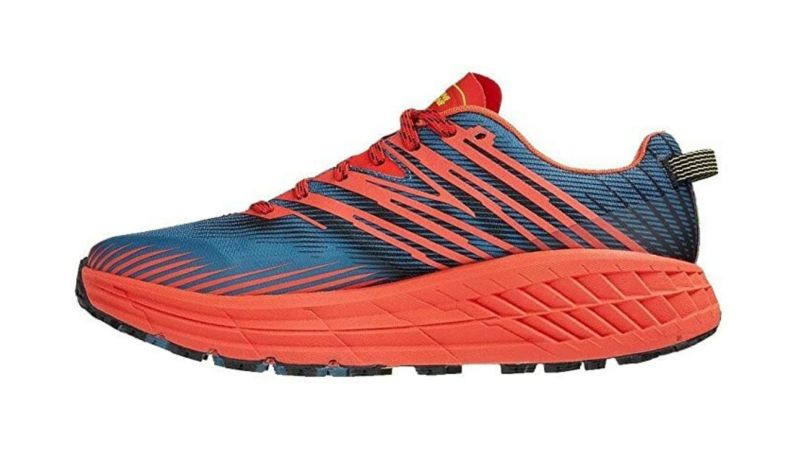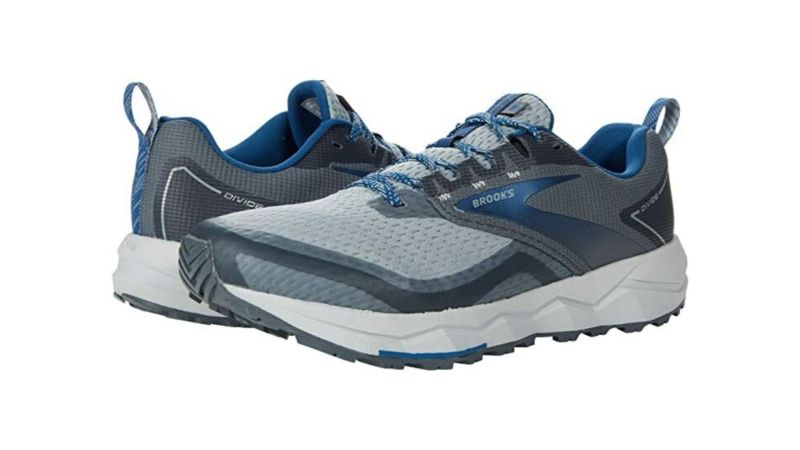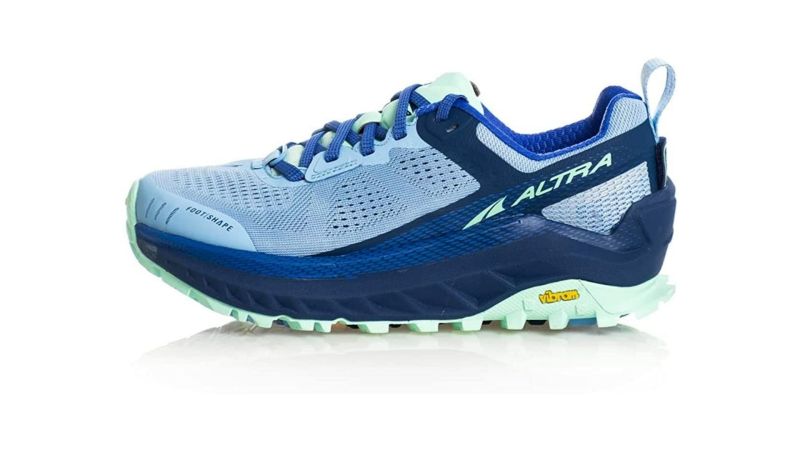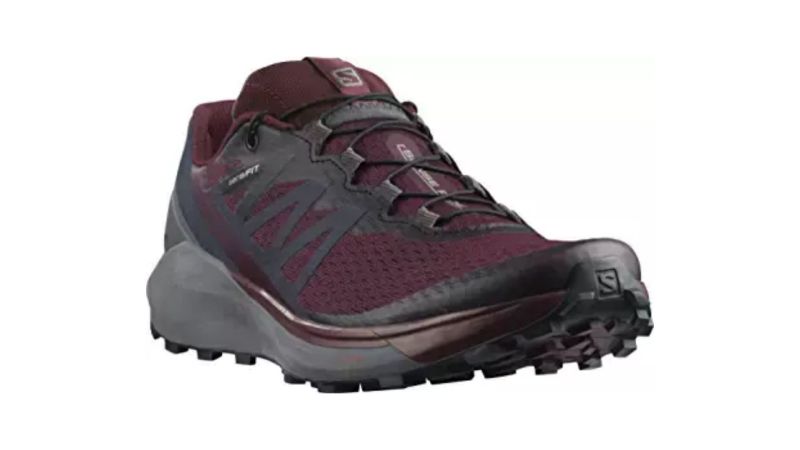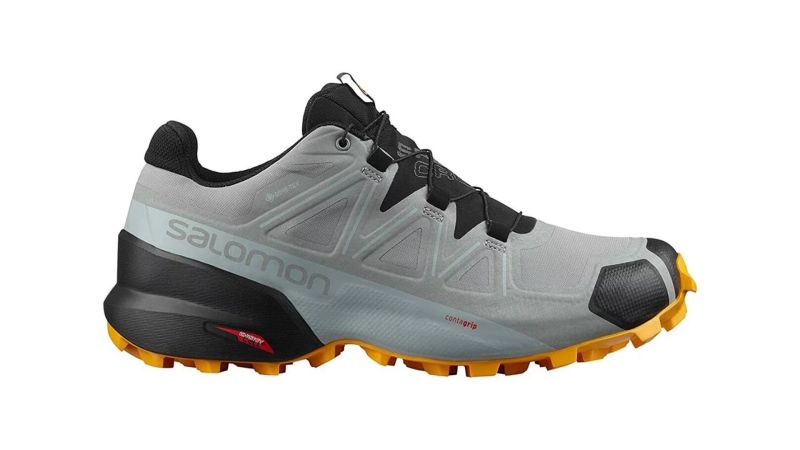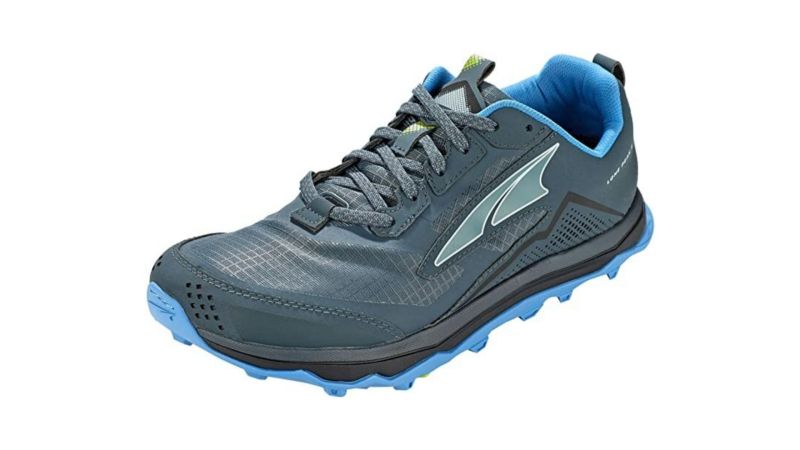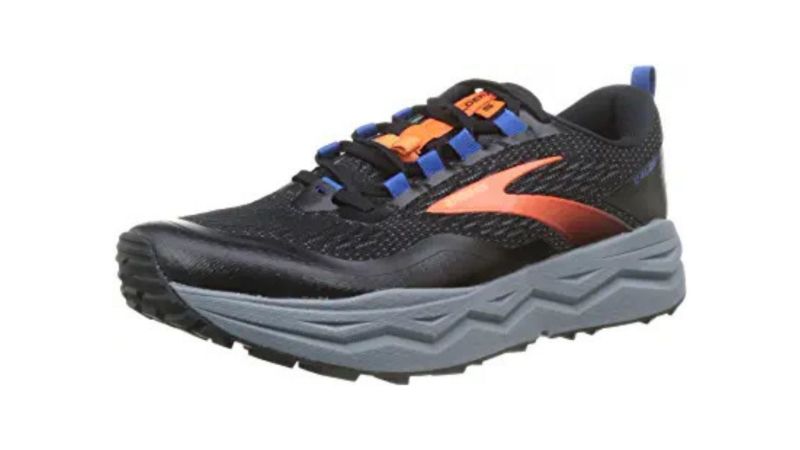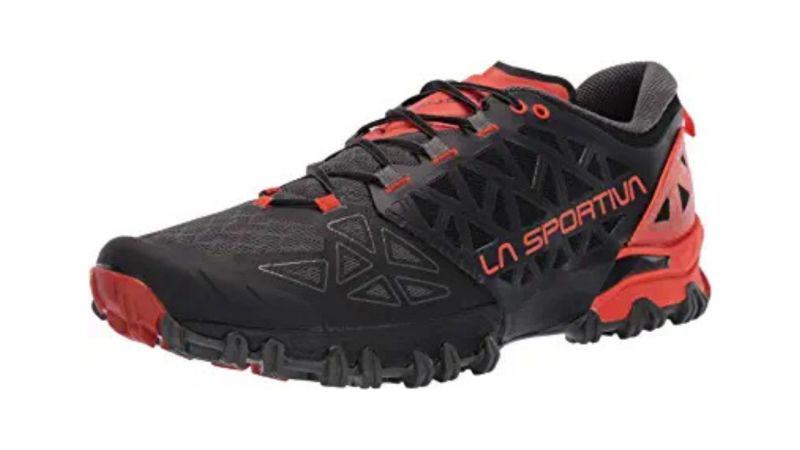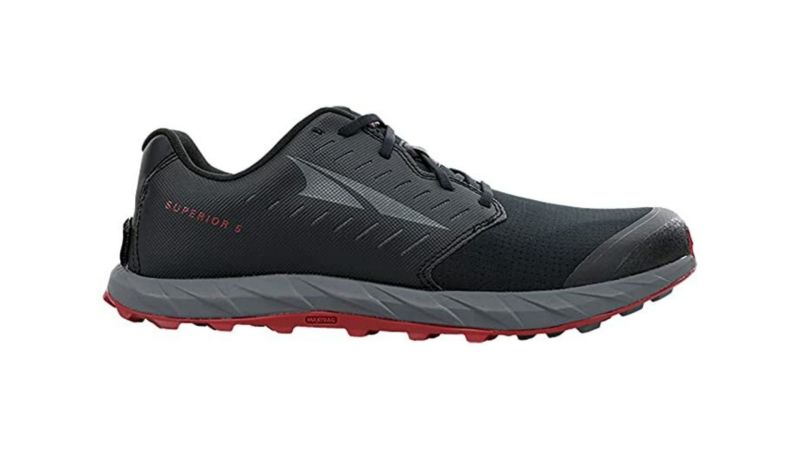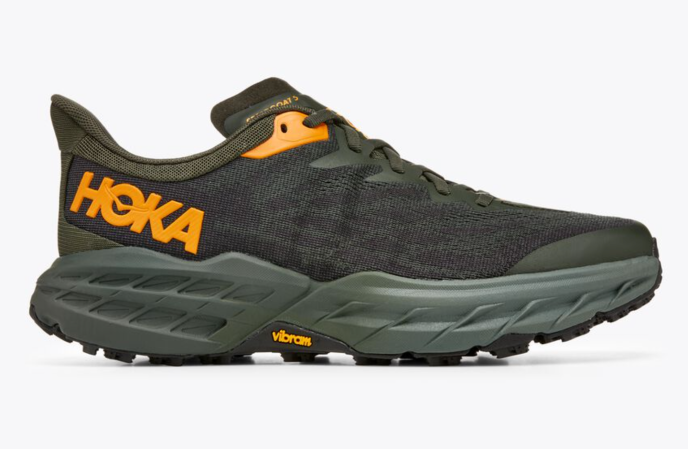We may earn revenue from the products available on this page and participate in affiliate programs.
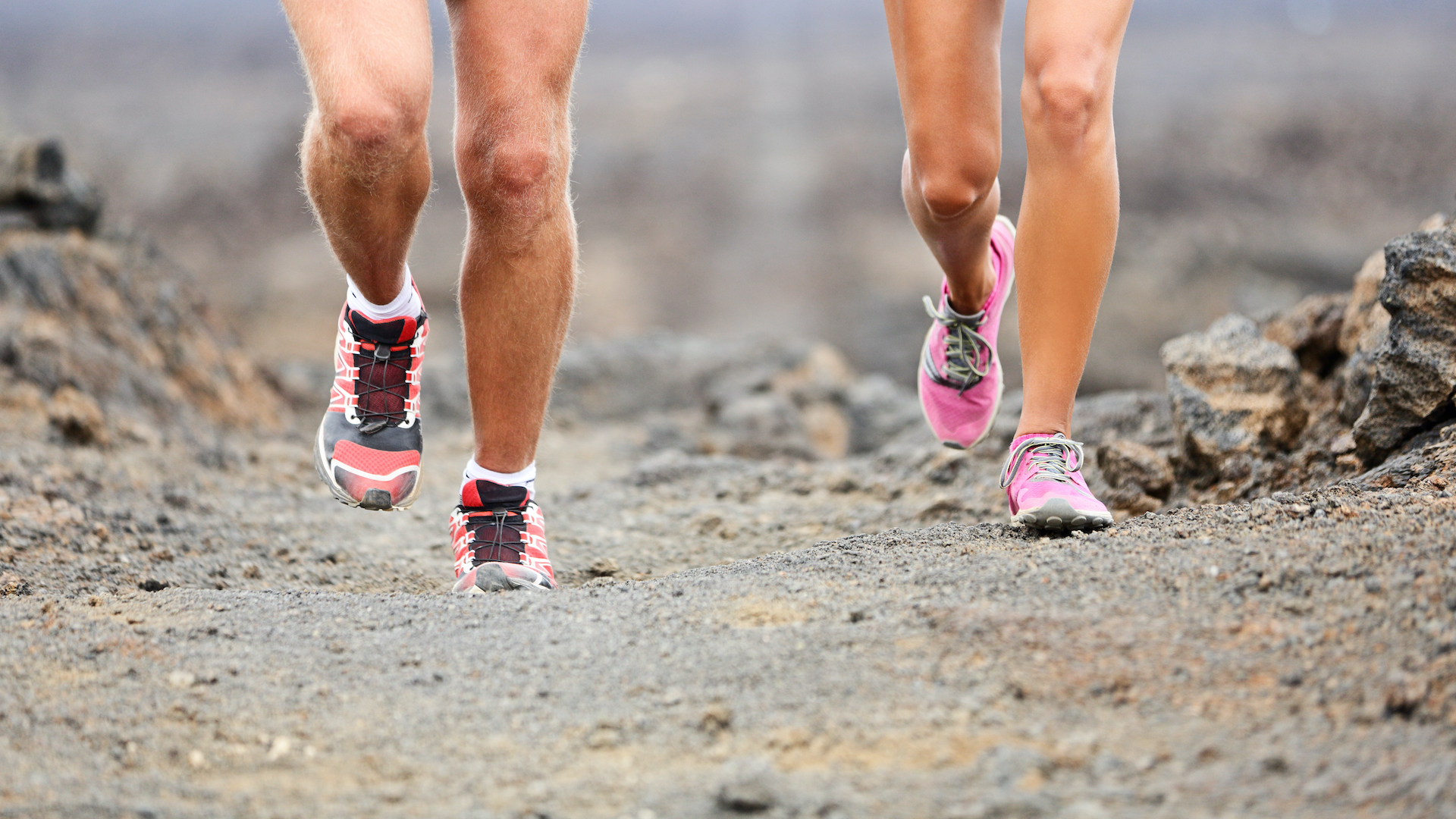
Let’s face it: For many of us, running is a necessary evil. For the military folks, PT isn’t an option (except for maybe Space Force), and a lot of vets continue PT out of a lifetime of habit. Some folks like to run, some outright despise it. So if you’ve got to do it, why not make it interesting?
Trail running can make this tedious exercise enjoyable and rewarding. If you’re miserable while running, you can distract yourself by focusing on the technical challenges around you, or just enjoy the scenery. While you can tackle tame trails with regular running shoes, you’re going to want to have specifically-made trail runners if you’re thinking of racing over more challenging terrain. Since the technical paths are where the fun is, we’ve put together this list to help you choose the best trail runners to help you take your fitness to the next level.
We’ve got a list of some of the best trail running shoes on the market, and why you should take a look at them. Since shoes are uniquely personal (one person may absolutely swear by a brand that feels horrendously uncomfortable to someone else), we’ve looked at a number of running categories and design styles to help you narrow down your choice. Read on and let’s see which of the best trail running shoes work for you.
Best Overall
Hoka One One Speedgoat 4
Best Value
Brooks Divide 2
Premium Pick
Altra Olympus 4
Best for Women
Salomon Sense Ride 4 for Women
Best Waterproof
Salomon Speedcross 5 GTX
Best for Hiking
Altra Lone Peak 5
Best Crossover/Hybrid
Brooks Caldera 5
Best All Terrain and All Climate
La Sportiva Bushido II
Best for Racing
Altra Superior 5
Best Updated
Why you should trust us
Since separating from the Air Force, I’ve personally been running on trails and in races for years (and more recently as part of the Ohio River Road Runners Club), and hiking the hills of southwest Ohio and beyond as a member of the Dayton Hikers organization. Along with the gearheads and other military veterans of Task & Purpose (many of whom have run, raced, hiked, and rucked the world over), we use a combination of hands-on testing, user testimony, and extensive research to decide whether these shoes are worthy of your attention. In cases where we aren’t able to test and break something firsthand, we make sure to evaluate what hikers and industry experts have to say to ensure you’re getting the best advice we can offer.
Types of trail running shoes
The typical trail runner has thicker cushioning and more rigidity throughout than a regular road shoe. More importantly, it has a tough outsole with lugs on the bottom to provide stability on the varied surfaces you’ll find on trails. To help deal with wet and muddy conditions, some trail running shoes are waterproof, while others use breathable meshes and various types of drainage to help the shoe dry quickly and to help avoid blisters.
Racing trail runners
This is something of an “unofficial” type, as you can race in any trail runner, but some that tend to be lighter and less cushioned are often desired for racing. With lower heel heights and less cushion in the midsoles, these are often used for shorter runs.
Ultra
Designed to help propel runners longer distances, these shoes often have thick cushioning that absorbs impact and propels the runner forward. For longer races, your joints and feet will take a beating, so shoes with maximum cushioning (like with the Olympus 4) are examples of this type of trail runner.
Mountain
Steep climbs with lots of rocks require less weight and thick cushion, as well as more responsiveness than ultra or long-distance trail runners. Mountain shoes are often lighter and more flexible to give the runner a better feel of the ground so as to better adapt to changes in terrain.
Crossover/Hybrid
Although you can run on any surface with trail runners, thick cushioning and deep lugs can make running on traditional paved surfaces feel weird. Crossover/hybrid shoes handle well on multiple surfaces by striking a balance between cushions and lugs. They might not be the best for long-distance trail running, but they can feel better if you’re mixing your runs.
Features to look for in trail running shoes
Midsole/cushioning
The midsole is where your foot actually rests, and where the cushioning is. Most brands classify their shoes as having something like low, medium, or high cushioning. Altra adds a max level. Hoka One One gets a little more creative and uses balanced, plush, and responsive. Whatever adjective is used, the shoes with maximum cushioning tend to be the ultra shoes, the ones intended for long-distance runs. The type of trail and the amount of distance you plan to cover can help you decide on what you need. More cushion helps to absorb impact and sustain the runner on longer runs, but they do add a little weight, which may be a concern for racing.
Traction
Lugs are the rubber knobs that jut off the outsole (the bottom of the shoe). Both the makeup of the outsole (typically rubber of some variety) and the lugs play a part in how well the trail runner grips the ground you’re running on. Deeper lugs (5mm or greater) can handle mud better but feel awkward on paved surfaces.
Uppers
The uppers are the top part of the shoe. These tend to be an engineered or synthetic mesh that is somewhat rigid to help protect the foot and stabilize it, while also being breathable. Some companies also add 3D printed overlays to enhance that stability.
Rock plate
The rock plate is a thin plastic or other durable synthetic material set beneath the midsole to help protect against rocks or other obstacles that you could run on top of. Not all trail runners have these (some with thick midsoles may not need them), but they’re nice when they do.
Benefits of trail running shoes
Impact absorption
Trail running is a blast because of the obstacles you have to overcome. But these obstacles, if highly technical, can mangle regular running shoes and make your joints regret your decision to take the trail. Trail runners are designed to absorb the impact when you jump on or over whatever is in your way. They’re engineered to also propel the runner forward, especially those with maximum cushioning. This can really help as you build up your distance.
Traction
Probably the most easily appreciated feature of trail runners is their ability to grip the terrain. Even high-quality road running shoes are apt to slip on wet creek rocks or muddy hillsides. A good pair of trail runners can give you confidence in your steps and make your runs that more productive.
Waterproofing/drainage
Most trail runners aren’t waterproof, although there are plenty of them on the market. But the nature of trail running means you will likely get your feet wet somewhat regularly. So to help protect your feet from having to run in soaked fabric, most trail runners have drainage holes or are made breathable enough to facilitate drying and eliminate water from the shoe.
Trail running shoes Pricing
Under $100
Some very popular running shoe brands produce some solid, entry-level trail runners for under $100. The ASICS Frequent Trail Runners and New Balance 481 V3 Trail Running Shoe both offer light shoes with decent tread for a decent price.
$100-$150
A good number of higher-end brands are represented in this pricing band, including the Altra Lone Peak 5 and Hoka One One Speedgoat 4, two of the best shoes on the market. Shoes in this range offer solid cushioning and quality.
More than $150
This is where you can expect to find your higher-end waterproof trail runners and specialty running shoes. Some, like the Hoka One One TenNine, cost upwards of $200 or more. That’s a lot of technology, and probably only for the seriously competitive trail runners.
How we chose our top picks
We used a combination of comparing our personal experiences and testing with that of choice vendors. Which were best sellers locally versus which sold best online? What did professional reviewers say, and how did that align with customer reviews? We used this to generate a workable list and then selected some for personal testing. We also combed through every positive and not-so-positive review we could find and probed issues when we noted common complaints. The shoes that consistently exhibited quality and customer satisfaction rose to the top, and our own personal experience helped to validate the finalists.
FAQs on trail running shoes
You’ve got questions, Task & Purpose has answers.
Q: Do you need different shoes for trail running?
A: As with most workout gear, the answer is “it depends.” If you plan on long distances (over 10 miles), you probably want to look at the trail runners with more cushion and deep lugs (assuming the trails are technical).
Q: What makes trail running shoes different from other running shoes?
A: The typical trail runner has thicker cushioning and more rigidity throughout than a regular road shoe. More importantly, it has a tough outsole with lugs on the bottom to provide stability on the varied surfaces you’ll find on trails. To help deal with wet and muddy conditions, some trail runners are waterproof, while others use breathable meshes and various types of drainage to help the shoe dry quickly and to help avoid blisters.
Q: Is it OK to use trail running shoes on the road?
A: Usually, yes. However, I don’t like to. The lugs on trail runners are designed to help navigate rocks and roots and to sink into softer trails. Deep lugs feel weird when running on paved surfaces, and wear out faster than they’re supposed to. Having said that, there are crossover/hybrid shoes with shorter lugs and more flexibility for multi-surface running.
Q: What trail running shoes should I use to run in mud?
A: Shoes with large (5-6mm) lugs and aggressive lug patterns provide ideal stability and confidence while running on muddy surfaces. Waterproof shoes are probably best, although they don’t breathe as well, but most shoes are designed to at least drain water as you run.
Q: What’s the most cushioned trail running shoe?
A: Shoes made for ultra or marathon running tend to pack in the most cushioning. Hoka One One went all in on this maximum cushioning, and the Speedgoat 4 is one of the most cushioned you’ll find.
Q: Should I wear gaiters with trail running shoes?
A: This depends on the kind of trails you’re running and the distance. Gaiters help to keep debris and moisture from getting into your shoes, so if you’re running long distances on muddy, snowy, or sandy trails, they may be helpful. But if you’re running relatively short distances, like three to five miles, they may be more trouble than they’re worth.
Q: Why are trail running shoes so expensive?
A: Regular running shoes are expensive enough as it is, right? Then why are trail runners even more so? It has to do with the increased durability needed in the shoe’s upper, midsole, cushioning, and outsole. The materials that make up the shoes have to be sturdy enough to provide support and absorb impact while also being breathable and somewhat flexible. They also need to be able to last despite being literally run into the ground, so then you can understand how the price of these shoes climbs pretty fast.
Q: Can I wear trail running shoes for hiking?
A: Absolutely. In fact, many serious hikers do. Check out this article from 2019, Top Footwear of the Appalachian Trail. Over 75 percent of the 365 Appalachian trail hikers that participated in the article survey that year wore trail runners at least part of the time. Be sure to break them in the same way as new boots, though, or you’ll wind up with blisters and hot spots. Also, if you have ankle stability issues, you may want to stick with traditional hiking boots.
Q: Can I wear trail shoes for walking?
A: Yes, but the hybrid/crossover trail runners, like the Brooks Caldera 5 and Divide 2, will probably perform the best on paved surfaces.
Our gear section
W.E. Linde spent 12 years in the Air Force as an intelligence guy and loved both his enlisted and commissioned time. Now a civilian, he toils away as a healthcare business analyst by day and wannabe writer by night because who needs sleep when you have coffee? His time in the military made him appreciate just how funny the term “military grade” can be. He currently writes for Duffel Blog and for the humor site Damperthree.com
